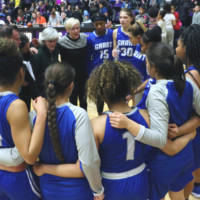“No School November” has become a reality for Portland Public Schools (PPS) students.
Oregon’s largest school district, PPS, has been on the brink of an unprecedented teachers strike due to the contentious negotiations the district and the PAT have been embroiled in for the past year — with its first official bargaining session on Jan. 10, 2023. Almost 10 months later, on Oct. 19, 2023, the Portland Association of Teachers (PAT) authorized its decision to strike. Now, still without a settlement, they will begin picketing on Nov. 1.
The implications of a teachers strike are far-reaching and will impact students, parents, educators and the city’s entire public educational landscape.
On Monday, Oct. 30, PAT members met with PPS board management for final negotiations. “If District management hopes to avoid a strike, time is running out for them to produce a comprehensive package that addresses our issues,” said the PAT bargaining team in an Oct. 26 statement.
After receiving PPS’ final proposal at 2:30 today, the PAT explained in its bargaining brief email the offer “did not live up to our expectations.” According to the PAT, the “low-lights” of the districts proposal include refusals to bargain over class size limits and mental health supports for students, a reduction in planning time for teachers compared to previous offers, removed previously agreed upon language, an “8% reduction in salary relative to inflation” and a lack of guaranteed support for kids who exhibit violent behavior at school. While PPS acknowledged environmental topics (overheated classrooms as well as general sanitary cleanliness), it did not promise to automatically enforce the standards. Instead, the district left the choice to take environmental action up to individual principals.
Prior to the strike, the district released a contingency plan on the PPS website outlining exactly what parents, students and staff can expect in the following weeks. PPS continued its preparations by releasing a statement prior to the confirmed strike, revealing that the district “would have no choice but to close schools. That would mean no in-person classes or online instruction,” which leaves more than 49,000 students, some as young as three, with delayed education.
Portland isn’t the only city facing union walkouts. Teachers in Seattle, Washington, were on strike for seven days before the 2022–2023 school year, and educators in Oakland, California, also spent a week on strike before reaching a deal in May 2023. Woodburn School District — just over 30 miles south of Portland — narrowly averted a strike in April 2023 after administrators agreed to raise teacher pay by nearly 18% over three years.
No one knows exactly how long the strike will last. It could be similar to Seattle’s seven days, or last as long as Minneapolis Public School District’s three-week strike in 2022.
PPS has not said how it would make up for lost school days in the event of a strike. They could be taken away from the existing four days set aside for “weather and other reasons”, or tacked on to the end of the school year, leaving students stuck in classrooms until late June. Either way, there will need to be 172 days of school or 990 instructional hours total. No exceptions.
Even with speculation and comparisons, there is no sure way of knowing how this strike will unfold since there has never been one before.
The closest PPS came was in 2014. In that case, a last-minute agreement that included hiring 150 more educators averted a walkout just two days before the strike was set to begin. However, it seems that the current impasse may not be as easily resolved.
Nine years ago, while teachers were asking for relatively similar things to this year’s demands, the main concern was a staffing shortage — a problem that was eventually resolved. Today, educators are asking for a 23% cost-of-living raise over three years.
The district countered with an offer of a 10.9% cost-of-living raise over three years. Educators automatically dismissed the offer, as it was essentially a salary freeze due to inflation and the high cost of living in the Portland metropolitan area.
To put this in perspective, the Beaverton School District, the second-largest school district in Oregon, gave a 4% cost-of-living adjustment, including retention bonuses to its teachers.
In addition to a pay increase, Portland teachers have also emphasized the need for a total of 440 minutes of additional preparation time, (compared to their current 320) averaging to just under an hour and a half per day. The PAT is also aiming for smaller class sizes with higher per-student payouts for educators when class size exceeds the maximum. During the 2022-2023 school year, the average PPS high school teacher had around 25.4 students per class, though many have more. Teachers are asking for a target size of 135 total students, with a cap of 160.
Whether or not these demands seem reasonable, it will be a stretch — PPS budgets just 48% of its funding to direct classroom support. In comparison, other Oregon districts allot much more: Bend-LaPine and Salem-Keizer spend 53%, Hillsboro 55% and Beaverton 56%.
A billboard adjacent to the Moda Center sums up the teachers union’s view on how they’ve been treated by the district: “Can’t put students first if you put teachers last.”
While a strike could help fulfill Portland teachers’ demands and improve schools across the city, it won’t come without clearing hurdles.
On Oct. 11, 2023, Dr. Renard Adams, chief of research for PPS, revealed in an interview with KGW8 that there is a gap of almost $230 million between the union’s demands and the district’s offer. Additionally, with falling enrollment rates, the strike could potentially steer families toward private school life, contributing to the current loss of PPS students.
“We can both acknowledge the work is hard and acknowledge that there are very real financial limitations on what we can offer if we want to sustain the success we’re seeing in our schools. We ask our educators to come back to the bargaining table and work with us to find a compromise that keeps our students at the center,” said Adams in an interview with OPB, advocating to keep students in school and costs low.
In an interview with KGW8, PAT President Angela Bonilla said, “The district needs to come to the table with real solutions, not just noes.”
Peyton Chapman, an anti-striker and Lincoln High School principal, said in an Aug. 31 bargaining meeting that “after having kids out of school during Covid, families disrupted (and) learning loss, the last thing I would want to see is us to be out of school.”
On the same day, the district released an official statement on the PPS website announcing it would “continue to strive for common ground that keeps our children at the center, keeps schools open and respects our teachers.”
What will happen in the coming days remains a mystery. The district could concede, the teacher’s union could compromise or each could take a firm stance. Only time will tell how long the strike lasts.



